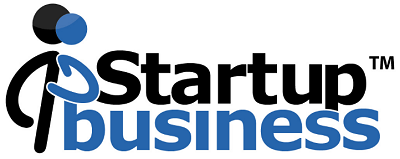
Understanding Identity Verification: A Guide To Your On boarding Process
Onboarding customers is an essential part of any business, but it can be challenging to ensure that the process is secure and efficient. In this guide, we’ll discuss the basics of identity verification and how it can help you create a reliable on boarding system for your customers.
Introduction to Identity Verification
When you’re on boarding a new customer, identity verification is an important step to ensure that you are doing business with the right person. There are a few different ways to verify someone’s identity, and the method you choose will depend on your business needs.
One way to verify someone’s identity is through government-issued ID. This could be a passport, driver’s licence, or other form of ID that has been issued by a government entity. If you are able to confirm that the ID is real and belongs to the person in front of you, then this is a good way to verify their identity.
Another way to verify someone’s identity is through biometrics. This could involve using fingerprint scanners, iris scanners, or other methods of identification that require physical traits unique to the individual. This method can be more secure than government-issued ID, as it is harder to fake biometrics than it is to fake an ID card.
A third way to verify someone’s identity is through digital means. This could involve sending a code to their phone or email address, or having them log in to a website or app with their username and password. This method can be convenient for both you and the customer, as they can do it from anywhere with an internet connection. However, it is important to make sure that the website or app you are using is secure, as there have been cases of fraud
What is identity verification?
Identity verification is the process of verifying that someone is who they say they are. This can be done through a variety of means, such as checking identification documents, comparing biometric data, or using third-party services.
The purpose of identity verification is to ensure that the person accessing a particular service or resource is who they claim to be. This is important for security and fraud prevention purposes. For example, if you were opening a bank account, you would need to go through an identity verification process to prove that you are who you say you are.
There are a variety of ways that identity verification can be conducted. The most common methods include:
Checking identification documents: This involves checking government-issued ID documents, such as a passport or driver’s licence, to verify that the information on them matches what the person has provided.
Comparing biometric data: This involves using physical characteristics, such as fingerprints or iris scans, to verify someone’s identity.
Using third-party services: This involves using services like Credit Karma or LexisNexis to verify someone’s identity. These services use public records and other data sources to confirm someone’s identity.
Types of Identify Verification
There are a few different types of identity verification that you may encounter during your onboarding process. The most common is probably government-issued ID, such as a passport or driver’s licence. This type of ID is typically used to verify your name, date of birth, and current address.
Another type of ID that you might be asked to provide is a utility bill or other official documentation that includes your name and address. This helps businesses verify that the information on your ID matches what they have on file for you.
You may also be asked to provide additional documents, such as a Social Security card or birth certificate, depending on the business’s needs. These documents are usually used to verify your identity in cases where the government-issued ID is not sufficient.
Keep in mind that businesses may have different requirements for identity verification, so it’s always best to check with them beforehand to see what they need from you.
How it Works
In the physical world, this usually involves presenting a government-issued ID, like a driver’s licence or passport. Online, identity verification can be a little more complicated.
There are many different ways to verify someone’s identity online, but most involve collecting some combination of the following information:
Name
Address
Date of birth
Social security number or other government-issued ID number
Phone number
Photo ID (e.g., driver’s licence or passport)
Some online services may also require you to answer questions about your personal history or complete a challenge to prove you’re not a robot. This is called “knowledge-based authentication.”
Once you’ve provided the required information and completed any challenges, the service will confirm your identity and allow you to create an account.
Benefits of Identity Verification
When it comes to online security, identity verification is key. By verifying a user’s identity, businesses can ensure that sensitive data and information are protected. In addition, identity verification can also help to prevent fraud and other malicious activity.
There are many benefits to identity verification, including:
-Improved security: By verifying a user’s identity, businesses can help to protect their data and information from being accessed by unauthorised individuals.
-Reduced fraud: Identity verification can help to prevent fraudsters from accessing sensitive data and information.
-Increased trust: Users are more likely to trust a business that takes steps to verify their identity. This can lead to increased customer loyalty and satisfaction.
-Improved compliance: Many regulations and laws require businesses to verify the identities of their users. Identity verification can help businesses meet these requirements.
Common Challenges With Identity Verification
There are many common challenges that businesses face when verifying the identity of their customers. The most common challenge is accurately identifying the customer. This can be difficult if the customer is using a false or stolen identity. Other challenges include verifying the customer’s address, phone number, and email address. Businesses may also struggle to verify the customer’s identity if they do not have access to the necessary documentation, such as a driver’s licence or passport.
Another common challenge is ensuring that the identity verification process is quick and easy for customers. Customers should not have to provide too much personal information or jump through too many hoops to complete the process. Otherwise, they may abandon their purchase or sign-up altogether. Finally, businesses must be careful to protect the customer’s data during and after the identity verification process. This includes storing data securely and complying with data privacy laws.
Alternatives to Identity Verification
There are a few alternatives to identity verification that companies can use to onboard new customers. One is using social media data to verify identity. This can be done by matching the customer’s name and contact information with their social media profile. Another alternative is using a customer’s physical characteristics to verify their identity. This can be done with biometrics like fingerprints or iris scanning.
Another option for verifying identity is through knowledge-based authentication (KBA). This is where the customer is asked a series of questions that only they should know the answer to, like their mother’s maiden name or the city they were born in. KBA can be combined with other methods like two-factor authentication (2FA) to further secure the onboarding process.
Ultimately, the best way to verify identity will depend on the company’s needs and what type of customers they are onboarding. By understanding the different options available, companies can make sure they are using the best possible method for verifying identities and keeping their customers safe.
Conclusion
Identity verification is a vital part of the onboarding process for any business. By understanding its importance and implementing the right processes, you can ensure that your customers have a secure and hassle-free experience when signing up. With the help of modern technology, identity verification has become quicker and easier than ever before so don’t let it be an obstacle to achieving success with your business!


